Class 10 AI Code 417 Sample Question Paper 2026 with Solution
CBSE Class 10 Artificial Intelligence (AI) Sample Question Paper 2026 with complete solutions and marking scheme is now available here for students to download in PDF format. This sample paper is based on the latest CBSE guidelines and exam pattern for the session 2025–26.
Students preparing for the upcoming CBSE Board Exams 2026 can use this paper for revision and self-assessment. It includes Section-wise questions, competency-based questions, case studies, and practical-based questions, designed to help students understand the exam pattern, question format, and marking distribution effectively.
CBSE | DEPARTMENT OF SKILL EDUCATION
ARTIFICIAL INTELLIGENCE (SUBJECT CODE – 417)
Sample Question Paper for Class X (Session 2025-2026)
Max. Time: 2 Hours
Max. Marks: 50
General Instructions:
- Please read the instructions carefully.
- This Question Paper consists of 21 questions in two sections: Section A & Section B.
- Section A has Objective type questions whereas Section B contains Subjective type questions.
- Out of the given (5 + 16 =) 21 questions, a candidate has to answer (5 + 10 =) 15 questions in the allotted (maximum) time of 2 hours.
- All questions of a particular section must be attempted in the correct order.
- SECTION A – OBJECTIVE TYPE QUESTIONS (24 MARKS):
i. This section has 05 questions.
ii. Marks allotted are mentioned against each question/part.
iii. There is no negative marking.
iv. Do as per the instructions given. - SECTION B – SUBJECTIVE TYPE QUESTIONS (26 MARKS):
i. This section has 16 questions.
ii. A candidate has to do 10 questions.
iii. Do as per the instructions given.
iv. Marks allotted are mentioned against each question/part
1. Answer any 4 out of the given 6 questions on Employability Skills (1 x 4 = 4 marks)
(i) Which type of non-verbal communication is shown by actions like raising a hand to greet or pointing a finger at someone?
a) Facial Expression
b) Posture
c) Gesture
d) Eye Contact
(ii) You take ownership of a task, complete it sincerely, and report honestly even if it is delayed. Which of the following best describes this behaviour as one of the skills you must master to succeed in life?
a) Self-awareness
b) Responsibility
c) Time management
d) Adaptability
(iii) Which of the following is not one of the suggested steps to manage emotional intelligence?
a) Making decisions purely based on emotions
b) Observing your own behaviour to understand your emotions
c) Practising meditation and yoga to stay calm
d) Thinking rationally before making decisions
(iv) What is the action called when you place the mouse pointer over a file in File Explorer and it displays the file’s details without clicking?
a) Click
b) Drag
c) Scroll
d) Hover
(v) Sanjana opened a small grocery store in her neighbourhood. Despite competition from nearby stores, her business attracted regular customers. Within a year, she expanded her store and later opened four more branches across the city. She now plans to expand to two more cities.
Which stage of the career or entrepreneurial process is she currently in?
a) Survive
b) Enter
c) Grow
d) Retire
(vi) Donating things we do not use, such as clothes, books, furniture, or food, contributes to which Sustainable Development Goal?
a) SDG 12 – Responsible Consumption and Production
b) SDG 3 – Good Health and Well-being
c) SDG 1 – No Poverty
d) SDG 4 – Quality Education
2. Answer any 5 out of the given 6 questions (1 x 5 = 5 marks)
(i) With respect to the type of data fed into the AI model, AI model can be broadly classified into ______ domains.
Ans: Three
(ii) Assertion(A): Virtue-based framework focuses on the character and intentions of individuals involved in decision-making.
Reason (R): Virtue-based framework evaluates whether actions align with principles such as honesty, compassion, and integrity.
a) Both A and R are correct, and R is the correct explanation of A
b) Both A and R are correct, but R is not the correct explanation of A
c) A is correct, but R is incorrect
d) A is incorrect, but R is correct
(iii) A teacher uses a rule-based program to grade students’ essays. The program was trained to look for specific keywords and phrases to assign grades. However, when students start using new words and expressions not included in the training, the program gives incorrect grades.
What is the most likely reason for this issue?
a) The rule-based program was not trained on enough essays.
b) The rule-based approach is static and cannot adapt to new words or expressions.
c) The students wrote essays that were too long.
d) The program was not tested properly.
(iv) _____ is an integral part of the model development process that helps to find the best model that represents our data and how well the chosen model will work in the future.
Ans: Evaluation
(v) _____ is mainly focused on enhancing raw input images or preparing them for other tasks, such as rescaling, correcting brightness, or changing tones. It is a subset of ______.
a) Computer Vision; Image Processing
b) Machine Learning; Artificial Intelligence
c) Image Processing; Computer Vision
d) Object Detection; Image Processing
(vi) State True or False: In natural language, it is important to understand that a word can have multiple meanings and the meanings fit into the statement according to the context of it.
Ans: True
3. Answer any 5 out of the given 6 questions (1 x 5 = 5 marks)
(i) A self-driving car fails to detect pedestrians crossing at night, resulting in a near accident. Which domain of AI technology should be enhanced to improve safety?
a) Natural Language Processing
b) Statistical Data
c) Recommendation Systems
d) Computer Vision
(ii) In the given fruit dataset, what do we call Fruit, Color and Price as?
| Fruit | Color | Price |
|---|---|---|
| Cherry | Red | Rs 1.8 |
| Orange | Orange | Rs 2 |
| Banana | Yellow | Rs 1 |
| Grape | Purple | Rs 3 |
a) Instances
b) Values
c) Models
d) Features
(iii) In a spam email detection system, out of 1000 emails received, 300 are spam. The system correctly identifies 240 spam emails as spam, but it also marks 60 legitimate emails as spam.
What is the precision of the system?
a) 0.80
b) 0.70
c) 0.75
d) 0.90
(iv) Assertion (A): In machine learning, a model with lower error is considered to perform better on a given dataset.
Reason (R): Error helps us evaluate how accurately a model can predict both training and unseen data, which is why it is used to select the bestperforming model.
a) Both A and R are correct, and R is the correct explanation of A
b) Both A and R are correct, but R is not the correct explanation of A
c) A is correct, but R is incorrect
d) A is incorrect, but R is correct
(v) Identify the application of Computer Vision from the given picture:
a) Facial Recognition
b) CV in Retail
c) Medical Imaging
d) Face Filters
(vi) Count and write the number of tokens in the sentence:
Words with adequate occurrence in a corpus are considered frequent and often reflect the main subject of the document, unlike stop words whose frequency is high but value is low.
Ans: 32
4. Answer any 5 out of the given 6 questions (1 x 5 = 5 marks)
(i) What do frameworks provide in the context of problem-solving?
a) Step-by-step guidance
b) Random solutions
c) Legal advice
d) Ethical justifications
(ii) Statement 1: The testing data set is a collection of examples given to the model to analyze and learn.
Statement 2: The training data set is used to test the accuracy of the model.
Which of the following is correct?
a) Both Statement 1 and Statement 2 are correct.
b) Both Statement 1 and Statement 2 are incorrect.
c) Only Statement 1 is correct.
d) Only Statement 2 is correct.
(iii) A company is using a simple AI model to screen job applicants for an entry-level data analyst position. The model considers four key attributes, each assigned a weight based on importance.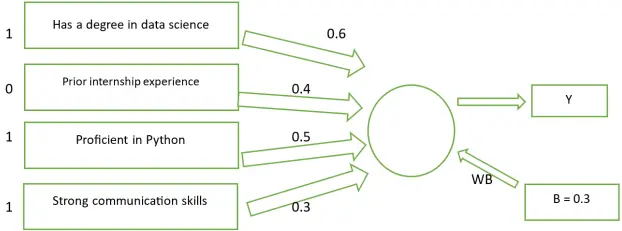
A bias value of 0.3 is added. The formula used is:
y=w1x1+w2x2+w3x3+w4x4+(1×b)
What will be the value of y for the given scenario?
a) 1.2
b) 1.4
c) 1.7
d) 2.0
*Note: Questions related to Perceptron will be asked in this objective (MCQ) format.
(iv) Why is it not recommended to evaluate a machine learning model using the same data on which it was trained?
a) It helps the model learn faster
b) It reduces bias in the dataset
c) It improves the performance of the model on unseen data
d) It may lead to overfitting and give an overly optimistic accuracy
(v) The numbers 1280×1024, 1920×1080, and 640×480 represent the number of pixels in width and height of an image or display. What is the correct term used to describe this measurement?
a) Pixel Depth
b) Resolution
c) Colour Depth
d) Classification
(vi) Identify the application of NLP shown in the given picture: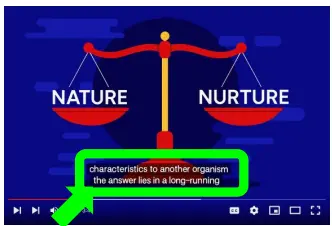
a) Autogenerated captions
b) Sentiment Analysis
c) Text Classification
d) Keyword Extraction
5. Answer any 5 out of the given 6 questions (1 x 5 = 5 marks)
(i) You are deciding to donate to a charity. One recipient is a local school in your neighbourhood, while another is a school in a distant country. Which factor might unconsciously influence your decision?
a) Location of the recipient
b) Design of the charity logo
c) Weather on the day of donation
d) The type of pen used to sign the donation form
(ii) A house was predicted to cost Rs 4,53,000, but the actual selling price was Rs 4,88,000. What is the error rate of this prediction (rounded to three decimal places)?
a) 0.058
b) 0.071
c) 0.092
d) 0.117
(iii) The term that refers to the process of identifying and locating real-world objects like faces, bicycles, or buildings in images or videos, and is used in applications such as image retrieval and automated vehicle parking systems is ______.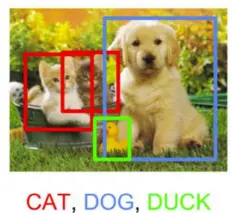
a) Image Classification
b) Image Segmentation
c) Object Detection
d) Feature Extraction
(iv) ______ is the outcome of the model wrongly predicting the negative class as positive class.
Ans: False Positive
(v) Which type of bot is easy to create, works based on pre-written instructions, is mostly free, easy to integrate with messaging platforms, requires little or no language processing skills, and has limited functionality?
a) Script Bot
b) Smart Bot
c) Cleaning Bot
d) Talbot
(vi) What are the stemmed and lemmatized forms of the word ‘flies’?
a) Stemmed: fly, Lemmatized: flies
b) Stemmed: fly, Lemmatized: fly
c) Stemmed: flies, Lemmatized: flies
d) Stemmed: fli, Lemmatized: fly
SECTION B: SUBJECTIVE TYPE QUESTIONS
Answer any 3 out of the given 5 questions on Employability Skills (2 x 3 = 6 marks) Answer each question in 20 – 30 words.
6.What is a pronoun? Give an example.
Ans: Words used in place of a noun are called pronouns.
Eg: Kavita bought a book. She has a great book collection.
‘She’ is used in place of the noun ‘Kavita’
7. List four steps to build self-motivation.
Ans: The four steps to build self-motivation are:
(i) Stay loyal to your goals
(ii) Find out your strengths
(iii) Set and focus on your goals
(iv) Develop a plan to achieve your goals
8. “Security break is leakage of information stored in a computer”. Explain two ways in which personal information can be lost or leaked.
Ans: Personal information can be lost or leaked in two ways:
(i) A person gets unauthorised access to our computer. This can happen in the office if we leave our computer without logging out.
(ii) We are not careful in giving out personal information over the Internet. For example, we share our account details and password on unsecure sites.
9. Reema runs a small handmade soap business. Every morning, she decides what products to make, how many soaps to produce, and where to sell them. She also arranges raw materials and assigns tasks to her staff.
From the paragraph, identify and write the two functions of an entrepreneur that are being described.
Ans: Making Decisions & Managing the Business
10. What is organic farming? Mention any two benefits of practising organic farming.
Ans: Organic farming is where farmers do not use chemical pesticides and fertilisers to increase their production.
Benefits: (i) It maintains the soil quality for future use. (ii) It helps in growing better quality, chemical-free crops.
Answer any 4 out of the given 6 questions in 20 – 30 words each (2 x 4 = 8 marks)
11. What do you do in the second and third stages of an AI Project cycle?
Ans: In the second stage, we need to acquire data, which becomes the base of our project. This data helps us understand the parameters related to problem scoping. We collect it from various reliable and authentic sources. In the third stage, we give the acquired data a visual representation using graphs, databases, flowcharts, maps, etc. Since the data is often large in quantity, visualizing it helps us interpret patterns more easily and draw meaningful insights.
12. Identify the type of deep learning model.
a) This deep learning model processes input images by learning to assign importance (weights and biases) to various features in the image, allowing it to distinguish one object from another.
Ans: Convolutional Neural Network (CNN)
b) This deep learning model is inspired by the structure of the human brain. It can automatically extract features from large datasets without explicit programming. Each node in the network acts like a small machine learning algorithm.
Ans: Artificial Neural networks (ANN)
13. How is reinforcement learning different from supervised and unsupervised learning?
Ans: (i) For supervised learning and unsupervised learning, you need to have a pretty good idea of the data that you have, what’s going on, and how to solve the problem.
(ii) However, you will frequently encounter situations where you have to deal with large complex problem spaces.
(iii) You may need to respond to unforeseen environments, and you don’t have sufficient data on those specific scenarios.
(iv) The environment may change. Hence your system needs to be adaptive.
14. What is model evaluation in machine learning, and how does it help improve an AI model?
Ans: Model evaluation is the process of using different evaluation metrics to understand a machine learning model’s performance. It helps us understand the model’s strengths, weaknesses, and suitability for the task at hand. An AI model gets better with constructive feedback. We build a model, get feedback from metrics, make improvements, and continue this process until we achieve a desirable accuracy. This feedback loop is essential for building trustworthy and reliable AI systems.
15. What is a “byte image” format in the context of digital images?
Ans: The most common pixel format is the byte image, where each pixel value is stored as an 8-bit integer, giving a range of possible values from 0 to 255. In this format, 0 is typically taken as no colour or black, and 255 is taken as full colour or white.
In computer systems, data is represented in the binary system, using ones and zeros. Each bit can have two possible values, and since 1 byte = 8 bits, this results in 256 possible values, ranging from 0 to 255. Therefore, each pixel in a byte image uses 1 byte of data.
16. Identify the stage of NLP and explain.
We are to the zoo going tomorrow.
We are going to the zoo tomorrow.
Ans: The stage of NLP is Syntactic Analysis / Parsing.
It is the process of checking the grammar of sentences and phrases. It forms a relationship among words and eliminates logically incorrect sentences.
Answer any 3 out of the given 5 questions in 50– 80 words each (4 x 3 = 12 marks)
17. Read the case study below and answer the following questions:
A school develops an AI system to shortlist students for a competitive scholarship. The algorithm is trained to prioritize students who complete online application forms quickly — assuming that faster completion reflects confidence, competence, and techsavviness. However, students who are not fluent in English, or who do not have access to a computer at home, take longer to fill out the form. As a result, many deserving students are unfairly rejected by the algorithm.
a) Identify two reasons why the algorithm gave biased results.
Ans: Two reasons why the algorithm gave biased results:
(i) The algorithm unfairly penalized students who are not fluent in English, assuming slower form completion indicates lower competence, when it may simply reflect language challenges.
(ii) Students without access to a computer or stable internet at home took longer to complete the application, but this delay is due to external socioeconomic factors, not lack of ability or confidence.
b) Mention two bioethics principles that can help solve such a problem and explain how they apply.
Ans: Two bioethics principles that can solve this problem are:
Do Not Harm:
The algorithm unintentionally harms students from less privileged backgrounds by reducing their chances of selection. To follow this principle, the AI system should be redesigned to avoid causing unfair disadvantages.
Give Justice:
Justice requires that all students are treated fairly and equitably. The system should not discriminate based on factors like language fluency or digital access. Incorporating diverse data and adjusting evaluation criteria would help ensure equal opportunity for all applicants.
18. a) What is the name of the learning model that works with unlabeled data to identify hidden patterns or structures in the data?
Ans: The learning model is called Unsupervised Learning.
b) Name the two main categories of this learning model.
Ans: The two categories of this learning model are Clustering and Association.
c) Explain each category briefly and provide one example for each.
Ans: Clustering: This involves finding similarities between objects and placing them in the same cluster and differentiating them from objects in other clusters.
Example: Grouping customers based on purchasing behaviour.
Association: This involves finding relationships or correlations between variables in large datasets.
Example: Market basket analysis (e.g., customers who buy bread often buy butter)
19. Identify the name of the application of Machine Learning (ML) or Deep Learning (DL) being used in the following scenarios.
a) A fitness tracker uses AI to monitor your heart rate and learn what is normal for you. One evening, while you’re relaxing and watching a horror movie, the tracker suddenly flags a spike in your heart rate as an anomaly — thinking something might be wrong.
Ans: Anomaly Detection
b) A wildlife camera is equipped with AI to monitor animals in a forest. It not only records movement of animals, but also identifies and classifies them into categories like “bird”, “mammal”, “insect”, etc.,
Ans: Object Classification
c) A smart refrigerator is equipped with an internal camera and an AI system. One of its door features a display screen that shows a real-time image of the inside, capturing all the food items on various shelves. For each item, the system not only shows its actual image but also places an AI-generated label on top of it, such as: “Milk Carton”, “Apple”, “Ice Cream”.
Ans: Object Identification
d) Imagine an app that helps you unlock your bike. Instead of typing a password, you simply scribble a numerical code like “5281” on your phone screen using your finger — even if your handwriting is a bit messy after a tough workout.
Ans: Digit Recognition
20. Read the following paragraph and answer the questions that follow:
A school recently tested an AI model designed to predict whether students would pass or fail their final exams. Out of 100 students, the model correctly predicted that 40 students would pass and they actually did. It also correctly identified 30 students who were going to fail. However, the model predicted that 20 students would pass, but they ended up failing. Additionally, it predicted that 10 students would fail, but they actually passed.
a) Draw the confusion matrix based on the above information. (2)
| Confusion Matrix | Prediction | ||
| Yes | No | ||
| Reality | Yes | 40 (TP) | 10 (FN) |
| No | 20 (FP) | 30 (TN) | |
b) Calculate the accuracy of this classification model. Show your working. (1)
Ans: Classification Accuracy
Accuracy = 𝐶𝑜𝑟𝑟𝑒𝑐𝑡 𝑃𝑟𝑒𝑑𝑖𝑐𝑡𝑖𝑜𝑛𝑠 / 𝑇𝑜𝑡𝑎𝑙 𝑃𝑟𝑒𝑑𝑖𝑐𝑡𝑖𝑜𝑛𝑠
= (𝑇𝑃 + 𝑇𝑁) / (𝑇𝑃 + 𝐹𝑃 + 𝑇𝑁 + 𝐹𝑁)
= (40 + 30) / (40 + 20 + 30 + 10)
= 70 / 100
= 0.7
Accuracy% = 70%
c) Write the total number of wrong predictions made by the model. (1)
Ans: Wrong Predictions = FP+FN =20+10 =30
21. Read the following three documents and answer the questions that follow:
● Document 1: “Students love studying AI”
● Document 2: “AI is transforming education”
● Document 3: “Teachers and students explore AI tools”
After performing basic text pre-processing (removing punctuation, converting to lowercase, and tokenizing), the documents become:
● Document 1: [students, love, studying, ai]
● Document 2: [ai, is, transforming, education]
● Document 3: [teachers, and, students, explore, ai, tools] Questions:
a) Create the dictionary (vocabulary) of unique words from all three documents.
Ans: Dictionary of unique words will be students, love, studying, ai, is, transforming, education, teachers, and, explore, tools
b) Construct the document vector for Document 3 using the dictionary.
Ans: Document vector for Document 3
| Students | love | studying | ai | is | transforming | education | teachers | and | explore | tools |
| 1 | 0 | 0 | 1 | 0 | 0 | 0 | 1 | 1 | 1 | 1 |
c) Explain how Bag of Words help in feature extraction.
Ans: Bag of Words (BoW) helps in feature extraction by converting text documents into fixed-length numerical vectors based on the frequency or presence of words from a defined vocabulary. This allows machine learning models to process and analyze text data just like numeric input, enabling tasks such as text classification, sentiment analysis, and topic modeling.
d) Why is the order of words not considered important in Bag of Words?
Ans: In Bag of Words, the focus is on what words appear, not how or where they appear in the sentence. The model treats text as a “bag” of words, ignoring grammar, syntax, and word order.
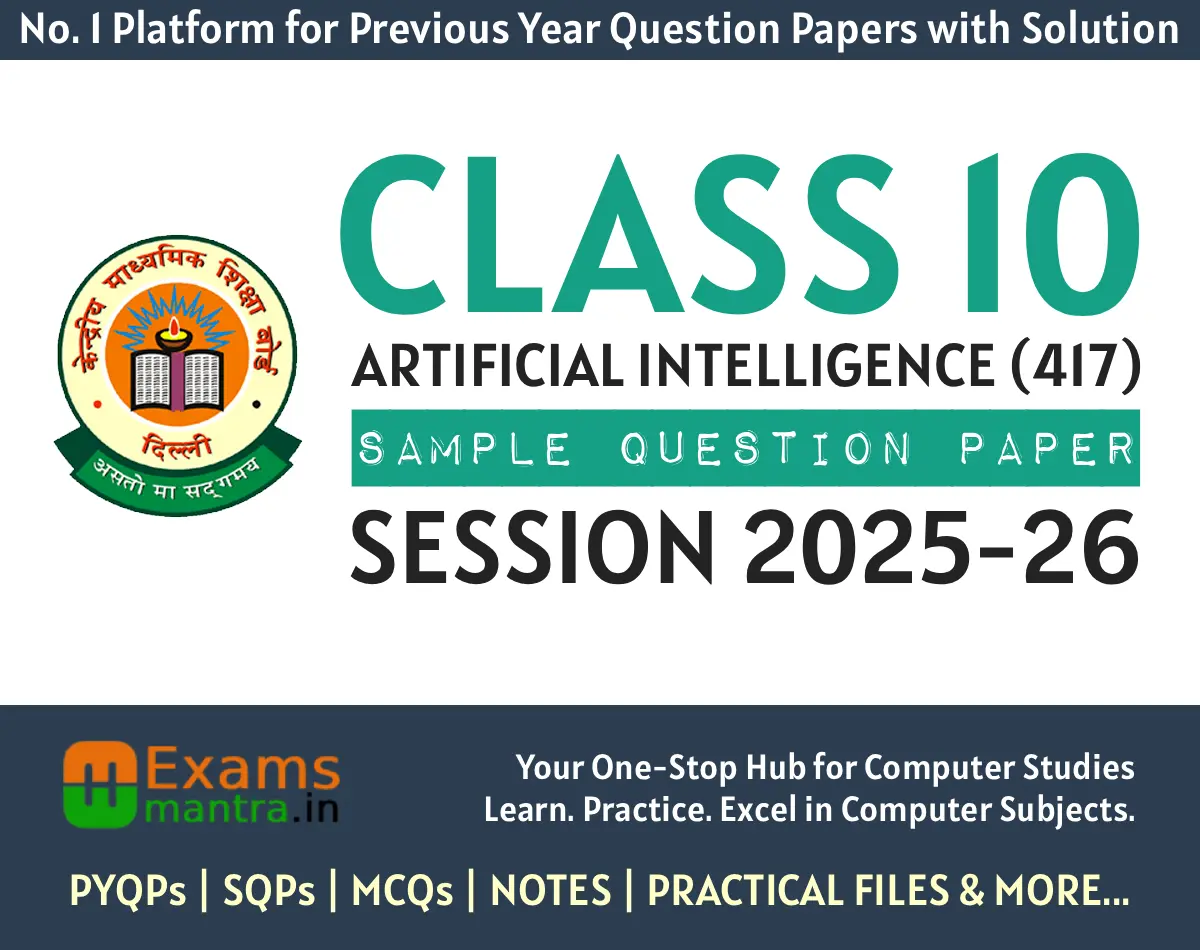
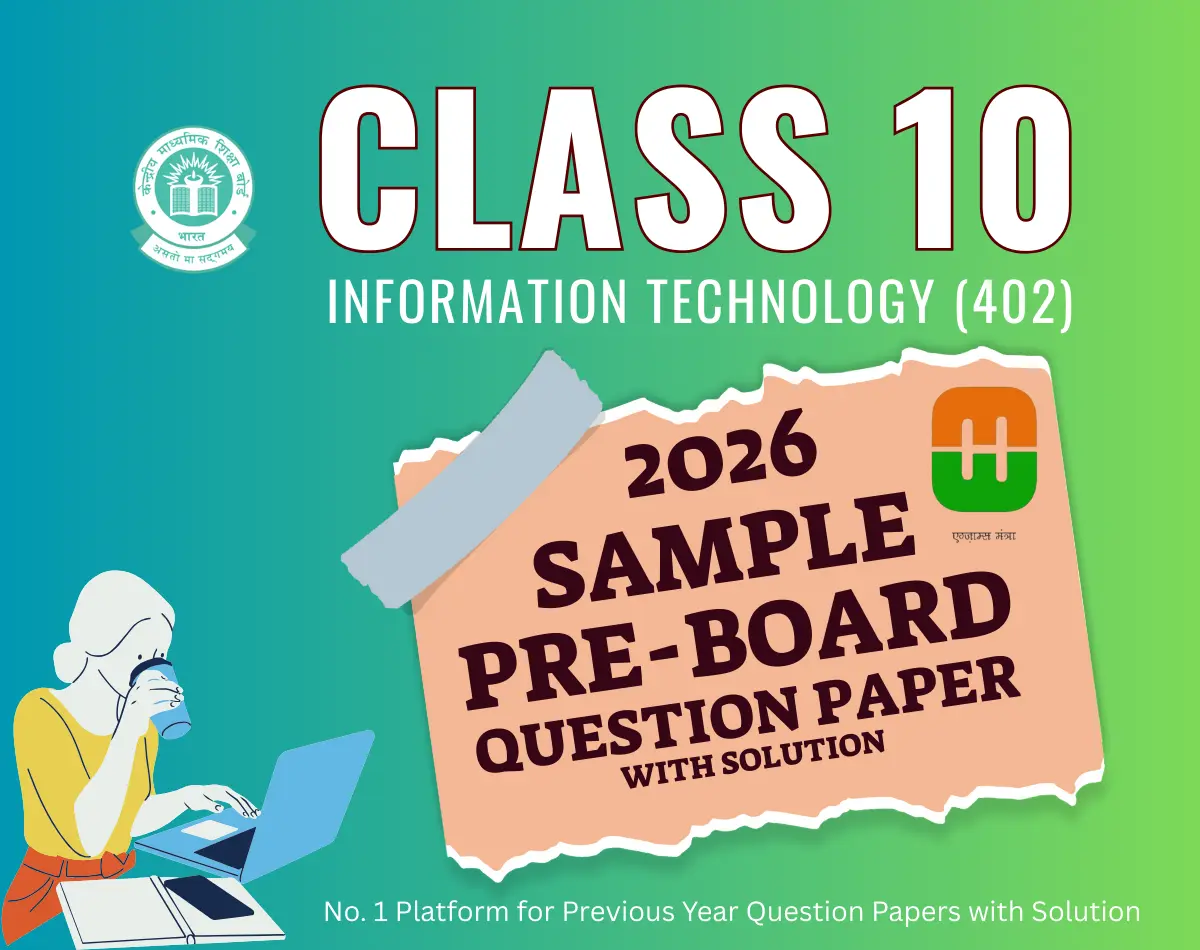
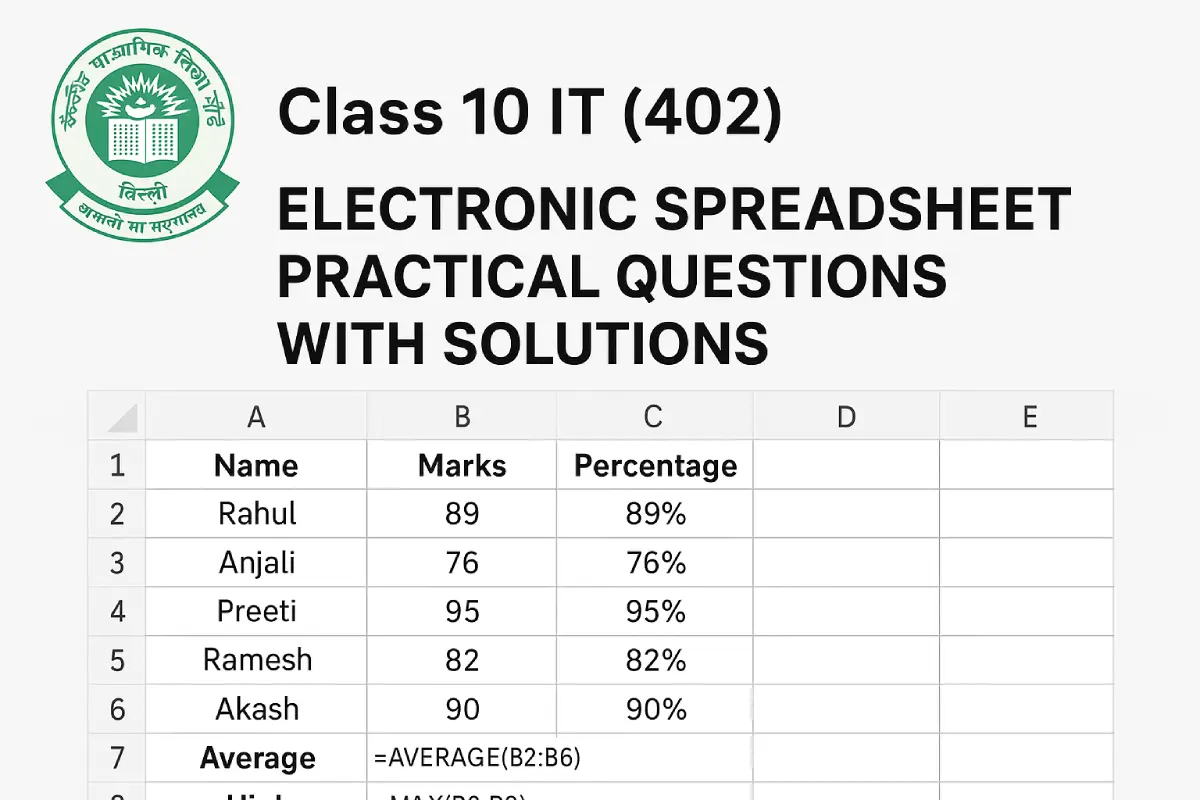
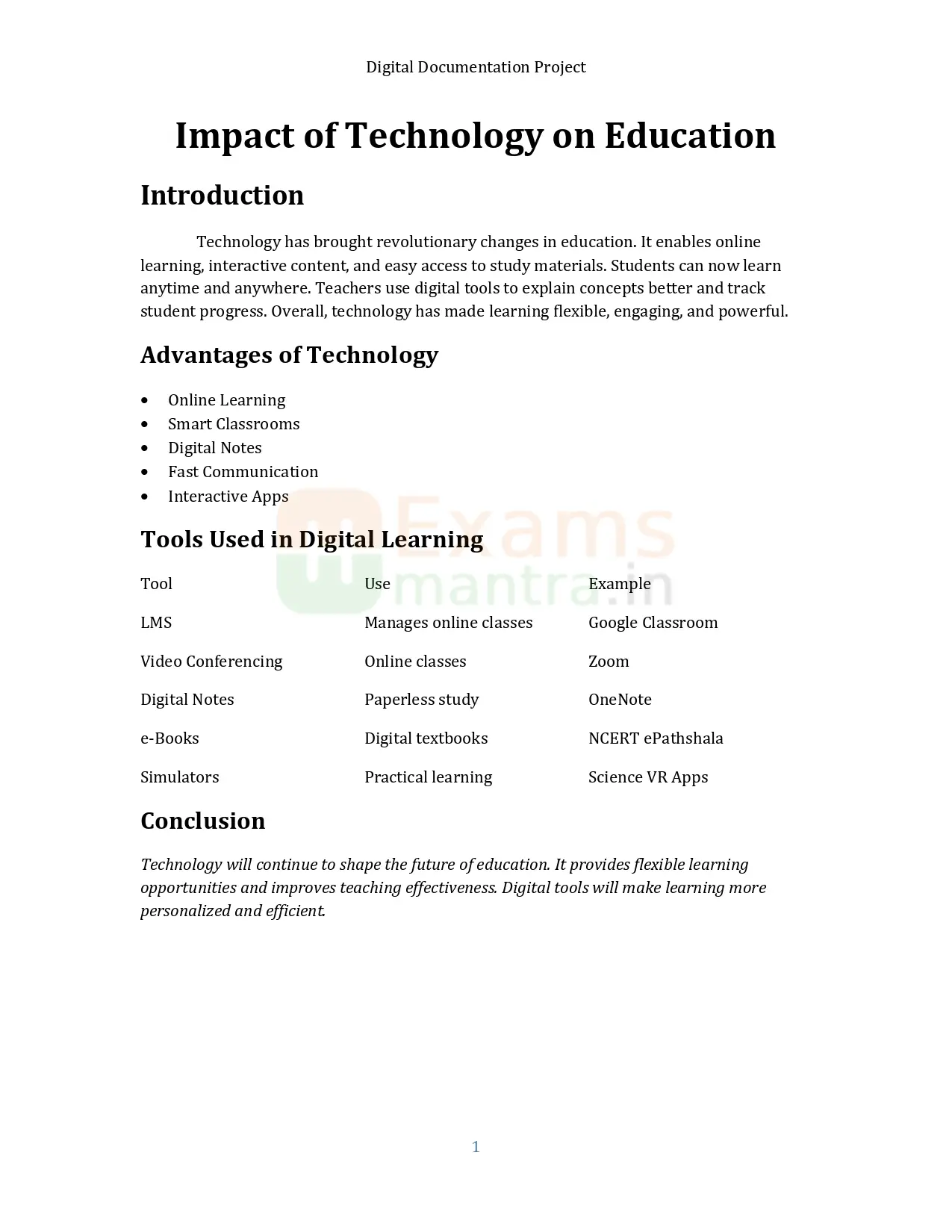
Post Comment